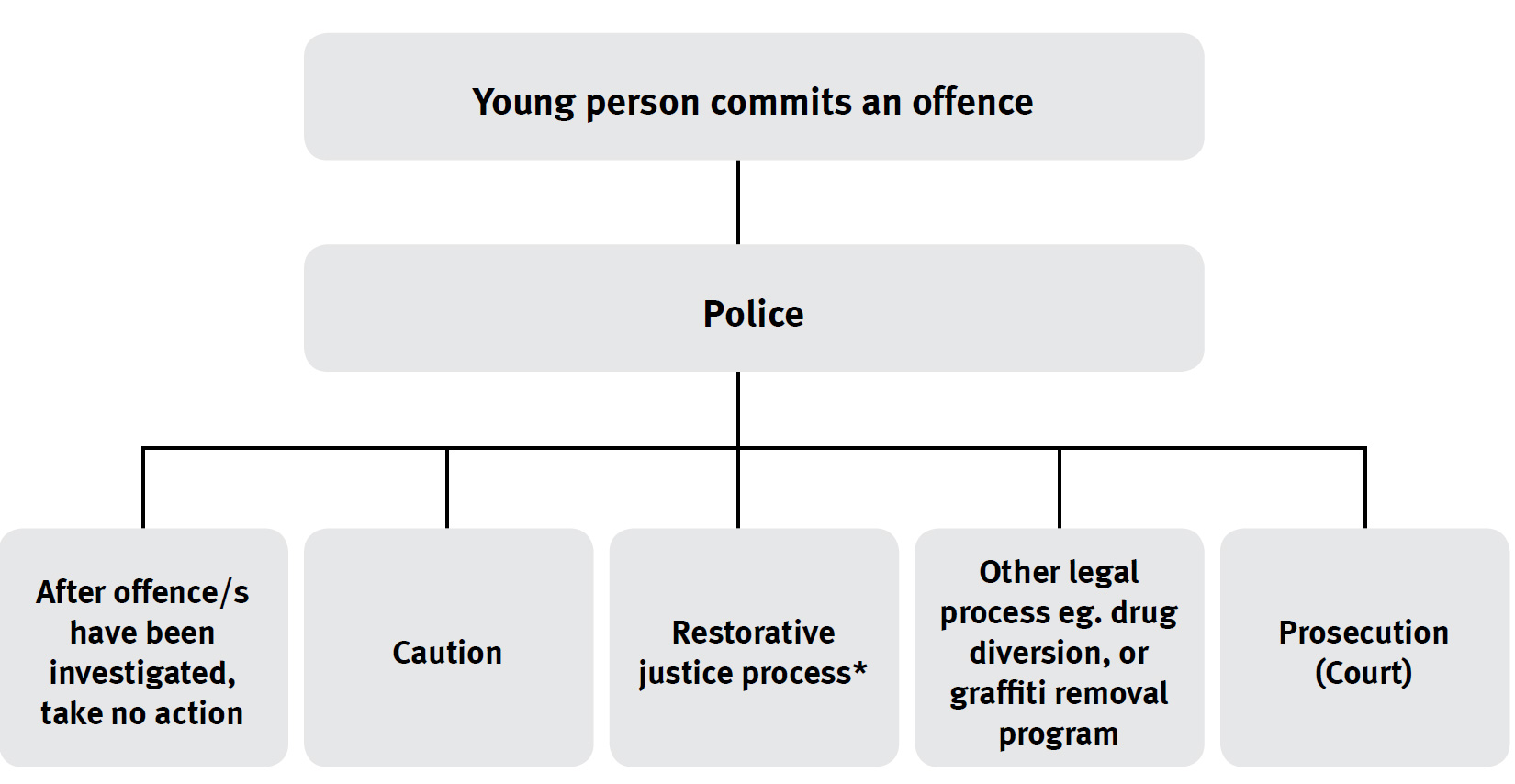Explainer: the YouthJustice system
Police process
Police are usually the first point of contact for a young offender.
Officers always consider alternatives to divert a young person from entering into or continuing in the justice system.

 *A restorative justice conference brings victims and offenders together to discuss the young offender’s behaviour and reach agreement on how to repair the harm caused by the offence, and encourage the young person to take responsibility for their actions.
*A restorative justice conference brings victims and offenders together to discuss the young offender’s behaviour and reach agreement on how to repair the harm caused by the offence, and encourage the young person to take responsibility for their actions.
Court process
If police consider the alleged offending is serious enough for a young person to go further into the justice system, court action is required.
A young person can stay in the community until the outcome of the court process has been finalised or can be held in custody.
Most offending by young people will be heard by a magistrate sitting in the Childrens Court.
Courts interpret and apply the laws made by Parliament.
The Youth Justice Act 1992 is the main piece of legislation that applies to young offenders (10–17 years).
Townsville also has a Specialist High Risk Youth Court that makes sure all identified high risk and repeat young offenders (aged 10–17) appear in court before the same magistrate.
The magistrate works with the young person, their legal representatives and government departments to hold them accountable, keep the community safe and work towards reducing the young person from reoffending.
Sentencing process
Courts must decide on a sentence for each young person based on their actions and their current situation.
Sentencing must be for one (or more) of the following reasons:
- Punish an offender for their actions
- Change (rehabilitate) their actions
- Discourage them and others from committing same or similar crimes
- Formally denounce an offender’s actions
- Protect the community from the offender.
In deciding what penalty is appropriate, the court takes into account the level of harm experienced by the victim, police reports, and other government agencies such as Youth Justice and Child Safety, or people connected to the young offender.
If the young offender is an Aboriginal or Torres Strait Islander person, a submission from their community justice group will also be considered.
Sentencing options available to the court if a young person is found guilty or pleads guilty:
- Reprimand order
- Disqualification of drivers licence
- Good behaviour order
- Restorative justice process (with or without a supervision order)
- Compensation
- Fine
- Treatment order (drug assessment/ education)
- Graffiti removal
- Probation
- Community service
- Conditional release (suspended detention)
- Detention (in a detention centre)
- Intensive supervision
- A combination of any of the above
- Parents of the young offender can also be ordered to pay compensation to the affected third party.
Cleveland Youth Detention Centre
Cleveland Youth Detention Centre houses boys and girls from north of Rockhampton, as far north as Cape York and the Torres Strait, Mount Isa to the west and the Northern Territory border.
Rules are set down when a young person enters the detention centre. Poor behaviour is monitored and responded to.
There is a structured routine that usually begins at 7am and ends by 7.45pm, when lights are out. All young people in detention must follow the structured routine.
Movement of young people around the centre is monitored closely.
Structured programs delivered to young people inside the detention centre include schooling (run by the Department of Education), vocational education and training, health, sports and Aboriginal and Torres Strait Islander cultural programs. Young people in Cleveland are more likely to be behind the average reading age for their age group.
Community-based supervision
Courts decide on community-based orders to provide young people with consequences for their offending, and to give them opportunities to gain skills and correct their behaviour through counselling and programs.
- Community service orders require a young person to do something for the community while making amends for their offending. The court decides how many hours work a young person must do.
- Probation orders require a young person to meet conditions such as completing activities and programs to help them not offend, and to follow rules set down by their youth justice case manager. The court decides on the length of the probation order (it can be up to three years).
Examples of activities, programs and intensive case management models:
- Working with high risk offenders and their families for up to 20 hours per week through intensive case management
- Community service work
- Transition 2 Success, which provides vocational training and education
- Cultural mentoring programs, such as Yinda.